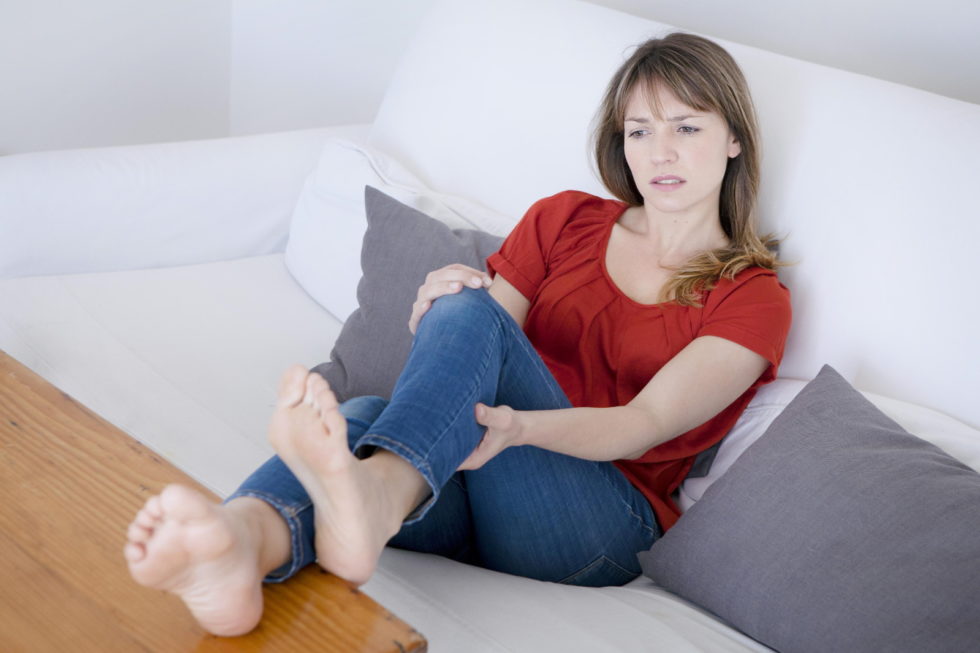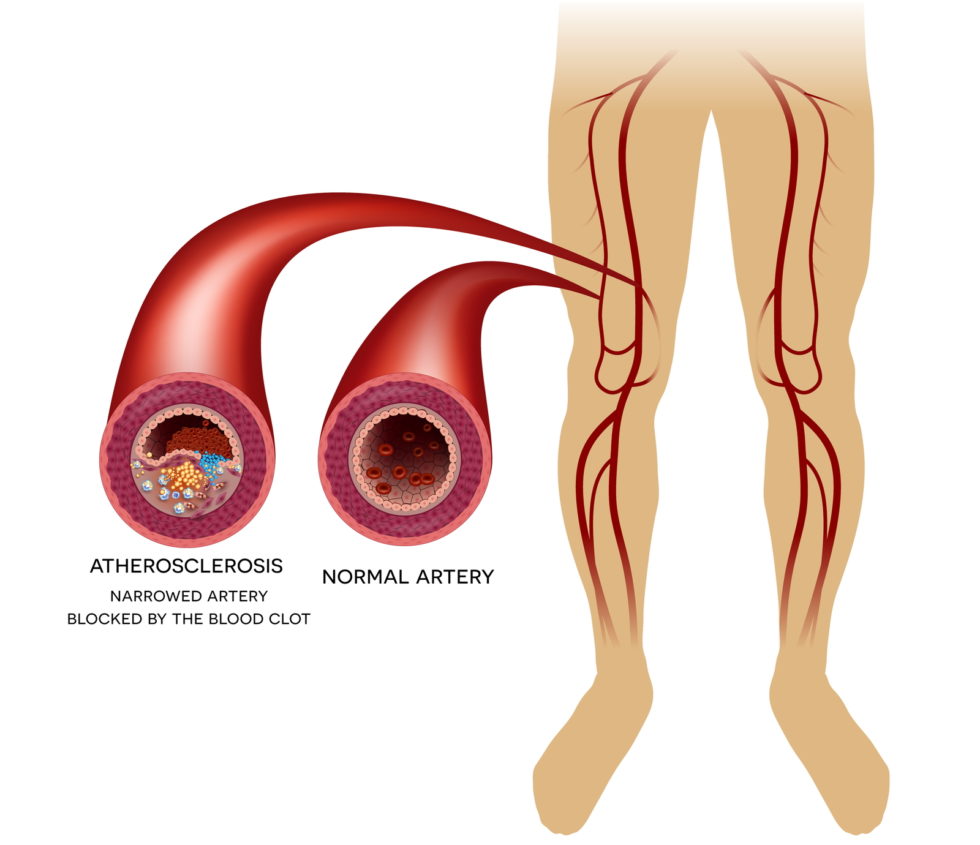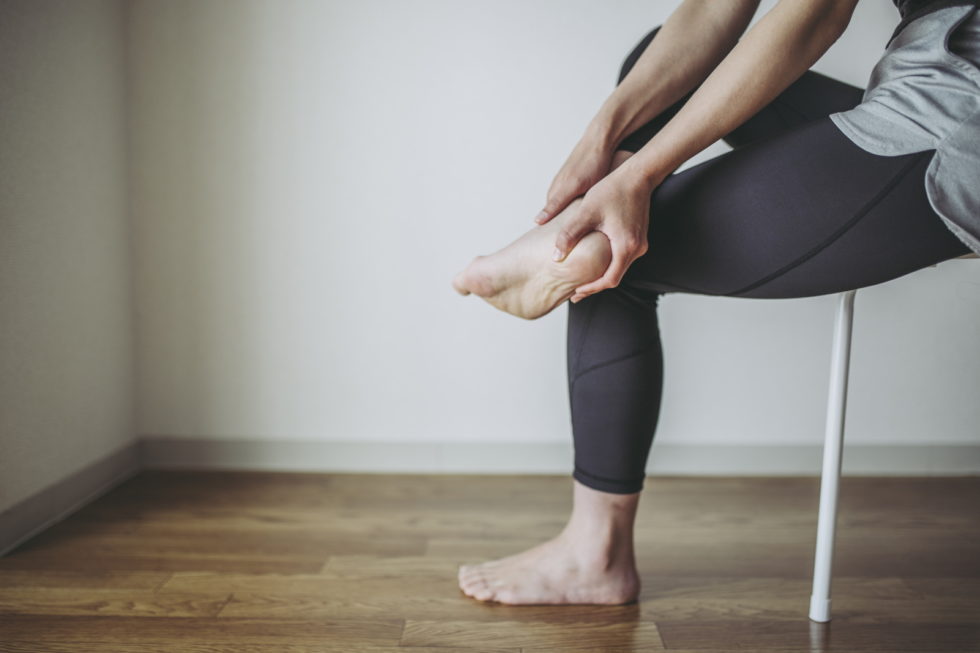Why Do I Feel Numbness in Feet and Legs?
Author: StrideCare Internal Team

You’d be hard-pressed to find someone who hasn’t felt numbness in their feet and legs. After all, general or temporary numbness is very common, especially if we sit in the same position for a long time or rely on poorly fitting shoes to get us through the day. More often than not, everything tends to go back to normal once we move around and restore normal blood flow. But what about those situations when numbness in feet or numbness in legs can’t be explained or lasts significantly longer than we expect?
Long-term numbness in feet and legs is typically a sign of a more significant issue. The causes include a recent injury to poor posture, lower back issues, and diabetes. Another is peripheral arterial disease (PAD), a vascular disease where plaque buildup on the walls of blood vessels causes them to narrow and leads to poor blood circulation. If left unchecked, your leg numbness may lead to other symptoms and complications.
- Burning sensations in the legs
- Pins and needles sensation or a crawling feeling under the skin
- Skin sensitivity and itchiness
- Muscle spasms
- Weakness in the affected leg or foot
Why Do Legs and Feet Go Numb?

Numbness is defined as a loss of sensation or feeling in the body. It can occur symmetrically (on both sides of the body) or only on one side. You can also experience numbness anywhere (legs, feet, arms, etc.). For many people, numbness in feet and legs is a temporary thing. Perhaps they’ve been in a meeting for most of the day and had their legs crossed the entire time. Or they bought a new pair of running shoes and didn’t realize how tight they were at first. In these situations, blood was restricted, or nerves were compressed so much that it created a temporary feeling of being unable to feel anything.
Consequently, they stand up and can’t feel one leg or foot because it is numb. They may even say, “my leg has fallen asleep.” After a few minutes, however, the numbness subsides. There are several common reasons why you may be experiencing numb feet and numb legs. Some are benign, and others are more complex. Below are a few.
Posture — As previously mentioned, you can experience numbness in your feet or legs if you are crossing your legs, sitting on your feet, or kneeling for long periods.
Ill-fitting clothes and shoes — Shoes that are too small or tied too tightly can place pressure on nerves and reduce blood flow. The same is true for pants or socks that are too tight or worn for long periods.
Injury — Any injury to the legs and/or feet can cause them to go numb temporarily or for an extended period. Often, the affected nerves aren’t in the feet and legs at all, but numbness still occurs. An example is a lower back or sciatica issue.
Other health conditions — Numbness is typically a symptom of an underlying or known condition, such as diabetes, neuropathy, fibromyalgia, or multiple sclerosis.
Other causes — A reaction to medication, recent surgery, pinched or compressed nerve, insect bite, or abnormal vitamin and mineral levels are all causes of potential numbness in feet and legs.
Peripheral Artery Disease — Also referred to as peripheral arterial disease or peripheral vascular disease. See below.
PAD Is a More Common Reason Than You Think
Peripheral artery disease (PAD) is a condition where plaque buildup on the walls of blood vessels causes them to narrow. This leads to poor blood circulation to the kidneys, intestines, arms, legs, and feet. Any significant blockages that restrict blood flow to your limbs or organs can cause irreparable damage over the long term. This includes gangrene that leads to amputation and being at risk for coronary artery disease, heart attacks, or strokes.

PAD affects approximately 8.5 million U.S. adults and 113 million people worldwide. It has a lengthy list of symptoms, highlighted by numb feet and numb legs.
- Painful cramping in the legs or hips, especially while active but feel better at rest
- Changes in the appearance of extremities (color, loss of hair, shiny skin)
- Cold legs and feet
- Thickening of the toenails
- Open sores that don’t heal
- Dry, scaly, flaky, or leathery skin
- Erectile dysfunction
- No pulse or weak pulse in legs and feet
The scary part about peripheral arterial disease is that while symptoms can vary widely, up to 4 in 10 people don’t have symptoms at first. Others may have minor leg discomfort or fatigue that is chalked up to osteoarthritis, neuropathy, or many of the other benign conditions or symptoms above.
What Treatments Exist for PAD?
If you are experiencing numbness in feet and legs, and the symptoms are related to peripheral arterial disease, the good news is that it is treatable. If necessary, your doctor may suggest minimally invasive treatments to help you successfully beat PAD. And in time, you will notice that you are no longer experiencing numb feet and numb legs. Our vascular experts generally call on three procedures in these situations.
Angioplasty — A balloon system that uses a catheter to open up narrowed or blocked arteries.
Atherectomy — Advanced laser technology that clears away built-up plaque on large blood vessels.
Stenting — This involves a small mesh tube to keep closed-off blood vessels open for the long term.
Numbness in Feet and Legs? Contact StrideCare

While numb feet and legs are a common condition for many people that don’t require medical intervention, it is definitely not that way 100% of the time. By treating the underlying causes of your numb feet and numb legs— which can include PAD—we can give our patients a new lease on life.
Our expert doctors and caring staff at StrideCare utilize the latest technologies and minimally invasive procedures to help our patients with a variety of vein and artery diseases. The vascular physicians at StrideCare are board-certified diagnostic radiologists with additional fellowship training in vascular and interventional radiology. PAD is highly treatable when caught early, and it is possible for you to lead a normal and healthy life.
Request an appointment for a vein or artery disease evaluation to discuss your options.
Prior to starting any new treatment or questions regarding a medical condition, always seek the advice of your doctor or other qualified health provider. This information is not a substitute for professional medical advice.
StrideCare serves the South Texas area including Houston, San Antonio, Austin, Round Rock, Bastrop, Brushy Creek, Cedar Park, Converse, Georgetown, Hutto, Kyle, Leander, Marble Falls, New Braunfels, Pasadena, Pearland, Pflugerville, San Marcos, Schertz, Houston, Sugar Land, Katy, Webster, Bay City, Clear Lake, Lake Jackson, The Woodlands, Universal City, Spring, Kingwood, Stafford, Conroe, Texas City, Cypress, League City, Bellaire, and more.


